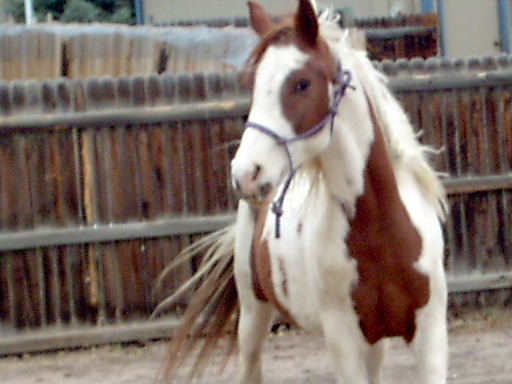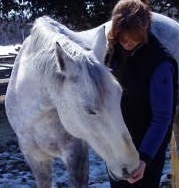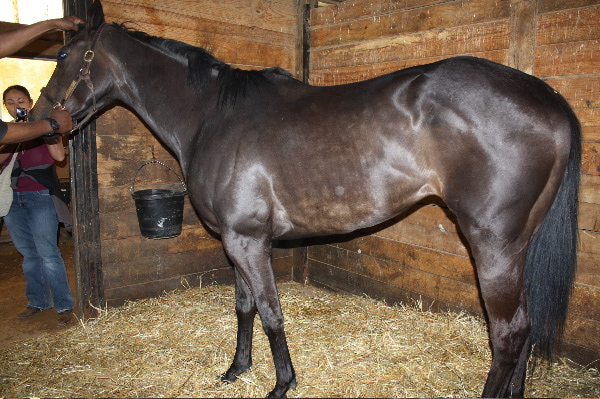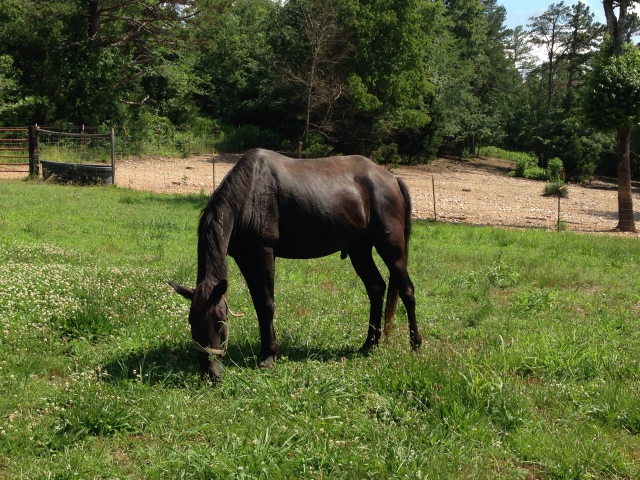QuestionDenise,
Hi, a few month's ago I asked you about teaching haunches in/out and your answer was very helpful. We are successfully executing haunches in/out at the walk and trot. I have since started teaching him his leads and we get it right about 95% of the time.
Although I'm not quite ready I was hoping you could explain why the counter canter is beneficial and is there an order to the counter canter and flying lead changes? Meaning would a person want to be successfully executing one before working on the other or does it matter? One of the reasons I am asking is because yesterday I was working on leads and I decided I would ride him in a figure 8 at the canter(which after doing some reading I think it was too tight of a circle) and not ask him to switch leads. I was quite surprised when he switched without asking, so I did it again and asked for the change, which is great but I also don't want to mess him up, if that makes since!
Any advice will be much appreciated.
Thanks, Lisa
AnswerHi Lisa!
Counter canter is an important maneuver in order to get correct lead changes when YOU want them. It makes the change in the bend/rein obvious and turns lead changes from just a happy coincidence into real partnership and communication. It also give you great control of the hind quarters and insures that the horse is changing hind feet first and not just the fronts.
When you are doing counter canter you must make sure the bend is correct. The horses whole frame must be involved here and you are really riding those hind feet. Be careful not to get caught up in leaning too much to the outside, I like to have as balanced a frame here as possible and it is a common mistake to lean too much to the outside. Give yourself a little more room if you find this to be an issue for you.
I will also ride counter canter in serpentine's, maintaining the proper and consistent bend throughout. Also don't get too stuck in riding a figure "8". Use a "D" pattern as well making sure you are staying deep in the corners. Achieving the lead change should feel just like a release of energy into the opposite direction. This is why counter canter makes for smooth and correct changes. You are not having to force or kick you way into a change, you simply change the bend, change the rein and release the energy. If you have good, free, control of the hind quarters, enough energy, you will be looking at some pretty nice changes!
Keep me posted! Hope this helps!
Denise

 exited horse
Question
titan
hi Im Jessica, My horse Titan is an Ara
exited horse
Question
titan
hi Im Jessica, My horse Titan is an Ara
 putting halter on
Questionhi,
Im probably going to sound like an complet
putting halter on
Questionhi,
Im probably going to sound like an complet
 licking palm or face
Question
licking
hello maam, what does it mean i
licking palm or face
Question
licking
hello maam, what does it mean i
 is it sweet itch
Question
light patches on belly
hello maam, may
is it sweet itch
Question
light patches on belly
hello maam, may
 My Horse acts like a completely different horse when I let him out of his pasture/pen.
Question
My baby
I have a 20 year old fully brok
My Horse acts like a completely different horse when I let him out of his pasture/pen.
Question
My baby
I have a 20 year old fully brok